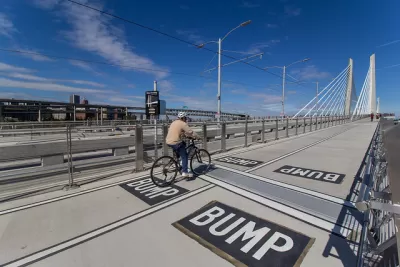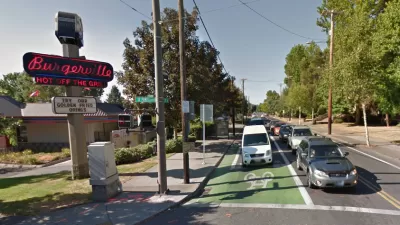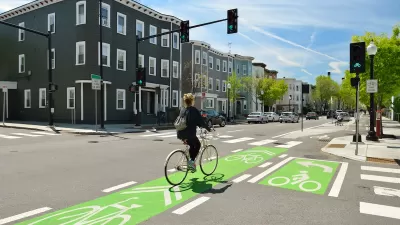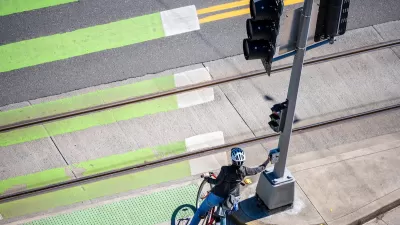The Portland Bureau of Transportation and Multnomah County agree on a 30 mph speed limit on five downtown bridges, but the state's department of transportation denied the change on two key spans.

Multnomah County and the city of Portland are "working together to reduce speed limits on several Willamette River bridges" in an effort to "reach Vision Zero safety goals and to create a more welcoming environment for non-drivers," reports Jonathan Maus. "PBOT and the County want speed limits on all five of their downtown bridges — the Broadway, Burnside, Hawthorne, Morrison and Sellwood — to not exceed 30 mph," but have not been granted permission for two key bridges from the Oregon Department of Transportation. "Now Multnomah County plans to appeal ODOT’s decision at a meeting of the state’s Speed Zone Review Panel next month."
In a letter to ODOT, the Multnomah County Bicycle and Pedestrian Advisory Committee writes that "[t]he speed limit reduction is in coordination with the PBOT Vision Zero program, which has a goal to reduce all speeds in the Central City area, including the County-owned bridges." The letter goes on, "[i]t is important for the safety of bicycle lane users to reduce the speed differential with motor vehicle traffic" on all of downtown Portland's bridges, and that "conflicts between pedestrians and motor vehicle drivers are common occurrences here. The people who use these areas deserve to have slower, safer motor vehicle traffic." Beyond making the bridge safer, the letter goes on, "speed limits should be consistent on all downtown bridges."
FULL STORY: Multnomah County and City of Portland push ODOT for lower speed limits on Hawthorne and Burnside bridges

Planetizen Federal Action Tracker
A weekly monitor of how Trump’s orders and actions are impacting planners and planning in America.

Maui's Vacation Rental Debate Turns Ugly
Verbal attacks, misinformation campaigns and fistfights plague a high-stakes debate to convert thousands of vacation rentals into long-term housing.

Restaurant Patios Were a Pandemic Win — Why Were They so Hard to Keep?
Social distancing requirements and changes in travel patterns prompted cities to pilot new uses for street and sidewalk space. Then it got complicated.

In California Battle of Housing vs. Environment, Housing Just Won
A new state law significantly limits the power of CEQA, an environmental review law that served as a powerful tool for blocking new development.

Boulder Eliminates Parking Minimums Citywide
Officials estimate the cost of building a single underground parking space at up to $100,000.

Orange County, Florida Adopts Largest US “Sprawl Repair” Code
The ‘Orange Code’ seeks to rectify decades of sprawl-inducing, car-oriented development.
Urban Design for Planners 1: Software Tools
This six-course series explores essential urban design concepts using open source software and equips planners with the tools they need to participate fully in the urban design process.
Planning for Universal Design
Learn the tools for implementing Universal Design in planning regulations.
Heyer Gruel & Associates PA
JM Goldson LLC
Custer County Colorado
City of Camden Redevelopment Agency
City of Astoria
Transportation Research & Education Center (TREC) at Portland State University
Jefferson Parish Government
Camden Redevelopment Agency
City of Claremont





























